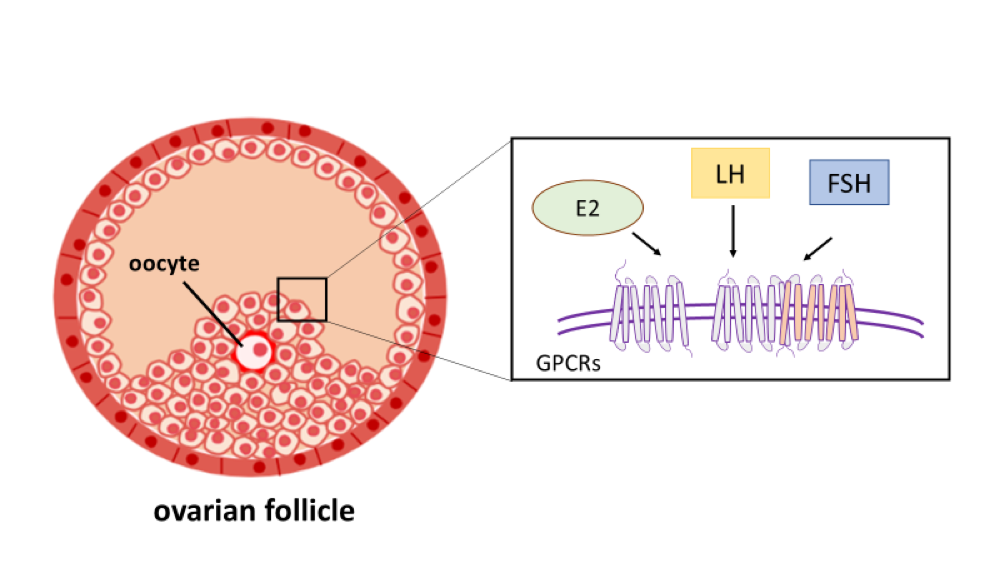Role of gonadotropin receptor heteromers in folliculogenesis and polycystic ovary syndrome (PCOS)
ROLE OF GONADOTROPIN RECEPTOR HETEROMERS IN FOLLICULOGENESIS AND POLYCYSTIC OVARY SYNDROME (PCOS).
The ovarian physiology is regulated by the combined action of gonadotropins and sex steroids, which drive the follicular growth, maturation and ovulation. Indeed, the progression along the developmental stages of the ovarian follicle is characterized by variations in follicle-stimulating hormone receptor (FSHR) and human luteinizing hormone/choriogonadotropin receptor (LHCGR) expression on the surface of granulosa cells together with increasing estrogen levels. The gonadotropin receptors, as most of the G-protein coupled receptors (GPCRs), are known to be capable to interact with other receptors, forming clusters on the cells surface and modulating the classical pathways activated by their ligands. In our studies we demonstrated the existence of an heterodimerization between FSHR and the G-protein coupled estrogen receptor (GPER), which trigger the activation of anti-apoptotic signals, necessary for the rescue of the follicle. The possible involvement of estrogens and their membrane receptor in modulating not only the FSH-dependent signals but the LH activity too, can help explaining still unclear clinical conditions linked to LH disfunctions, such as the polycystic ovary syndrome (PCOS). Those findings underline the central role of estrogens during the pre-ovulatory follicle growth and selection, and they can be crucial to improve assisted reproductive technologies and the understanding of pathological conditions.


